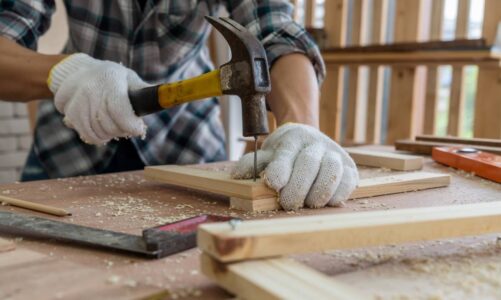Nowadays, where noise pollution is a growing concern, the demand for soundproofing solutions has surged. From busy city life to open-plan office spaces, many consumers are eager to find products that promise peace and quiet. However, as the market for soundproofing solutions expands, so does the potential for misleading claims.
Are consumers being led to believe in products that don’t deliver as promised?
The Alluring Promise of Soundproofing
Noise has become an ever-present issue, and as more people work from home or live in high-density urban areas, the desire for effective soundproofing has reached new heights. From acoustic panels to advanced insulation materials, manufacturers promise various ways to block out sound, offering peace and tranquillity in even the noisiest of environments. But how much of what is advertised can actually be delivered?
Misleading Claims: What’s Really Being Promised?
The soundproofing industry is full of bold promises, but not all of them live up to expectations. Terms like “100% soundproof” or “complete noise elimination” often appear in marketing, but these claims can be misleading.
“100% Soundproof” Claims
One of the most common overstatements in the soundproofing industry is the claim that a product is “100% soundproof.” In reality, no material or technology can fully block all sound. While some products significantly reduce noise, they do not entirely eliminate it. Marketing that implies complete soundproofing is misleading and unrealistic.
The Problem with “Noise-Cancelling” Labels
Another misleading term often used in the industry is “noise-cancelling.” While noise-cancelling technology exists, it’s generally used in products like headphones or specific high-tech solutions, not in walls or windows. Many soundproofing products are marketed as noise-cancelling, leading consumers to believe they will completely eliminate noise, when in fact they may only reduce it.
Unclear Testing Methods
Another issue is the lack of standardised testing across the industry. Soundproofing products are tested using various methods, and manufacturers sometimes omit the conditions under which the testing takes place. Without transparent and consistent testing standards, it’s difficult for consumers to assess whether a product will perform as claimed in real-world conditions.
Impact Noise vs Airborne Sound
Soundproofing products often focus on blocking airborne sounds, such as voices or traffic. However, they may not be as effective at blocking impact noise, like footsteps or vibrations from machinery. Many products fail to make it clear that they may not address all types of noise. As a result, consumers might be disappointed when their noise reduction needs aren’t fully met.
The Real Limits of Soundproofing
While soundproofing products can significantly reduce noise, they have their limits. From diminishing returns on more expensive solutions to the challenge of installing them correctly, understanding the real-world performance of these products is important.
Not a One-Size-Fits-All Solution
Soundproofing is not a single product, but a combination of strategies tailored to specific needs. Different types of noise (airborne vs. impact noise) require different approaches. For example, double-glazed windows are excellent for blocking outside noise, but might not be as effective in reducing internal sounds. Recognising the need for a tailored solution is essential for managing expectations.
Diminishing Returns
The concept of diminishing returns applies to soundproofing as well. While upgrading to a more advanced product may reduce noise, the improvements might be minimal once you’ve reached a certain level of soundproofing. Consumers need to be aware that spending more money won’t always result in a proportional increase in sound reduction.
The Importance of Proper Installation
Even the best sound proofing products can underperform if not installed correctly. Gaps around windows, doors, and walls can significantly reduce the effectiveness of soundproofing materials. Consumers need to ensure proper installation, or they might find that their noise reduction efforts are in vain.
How to Avoid Being Misled by the Soundproofing Industry
The soundproofing market can be tricky, especially with so many exaggerated claims and unclear product specifications. However, by knowing what to look for, you can avoid falling victim to misleading marketing.
Seek Verified Performance Data
When shopping for soundproofing products, look for evidence-based claims. Reputable manufacturers will provide data such as Sound Transmission Class (STC) ratings, which measure the effectiveness of a material in reducing sound transmission. This allows consumers to compare products more accurately and make more informed decisions.
Understand the Limitations of Each Product
Be sure to understand the specific limitations of each soundproofing solution. Are you dealing with traffic noise, internal voices, or vibrations from machinery? Choose a product that is designed to address your specific noise issue, as not all products are effective across all types of sound.
Question Overblown Marketing Claims
Don’t fall for marketing that promises “complete soundproofing” or “total noise elimination.” These exaggerated claims should raise a red flag. Instead, look for more realistic promises and clear explanations of what the product can actually do.
Prioritise Expert Advice
If you’re unsure about which product to choose, consult experts or soundproofing professionals who can offer tailored advice based on your specific needs. They can help you navigate the vast array of options and find the best solution for your space.
Conclusion
While soundproofing products are certainly helpful for reducing noise, the industry’s marketing often paints a picture that doesn’t fully reflect reality. Misleading claims, inconsistent testing standards, and a lack of clarity around the limitations of different products can leave consumers frustrated.
To avoid being misled, it’s crucial to understand the true capabilities of soundproofing solutions, look for verifiable performance data, and approach marketing claims with caution. By doing so, consumers can make more informed decisions and invest in products that truly meet their needs.




